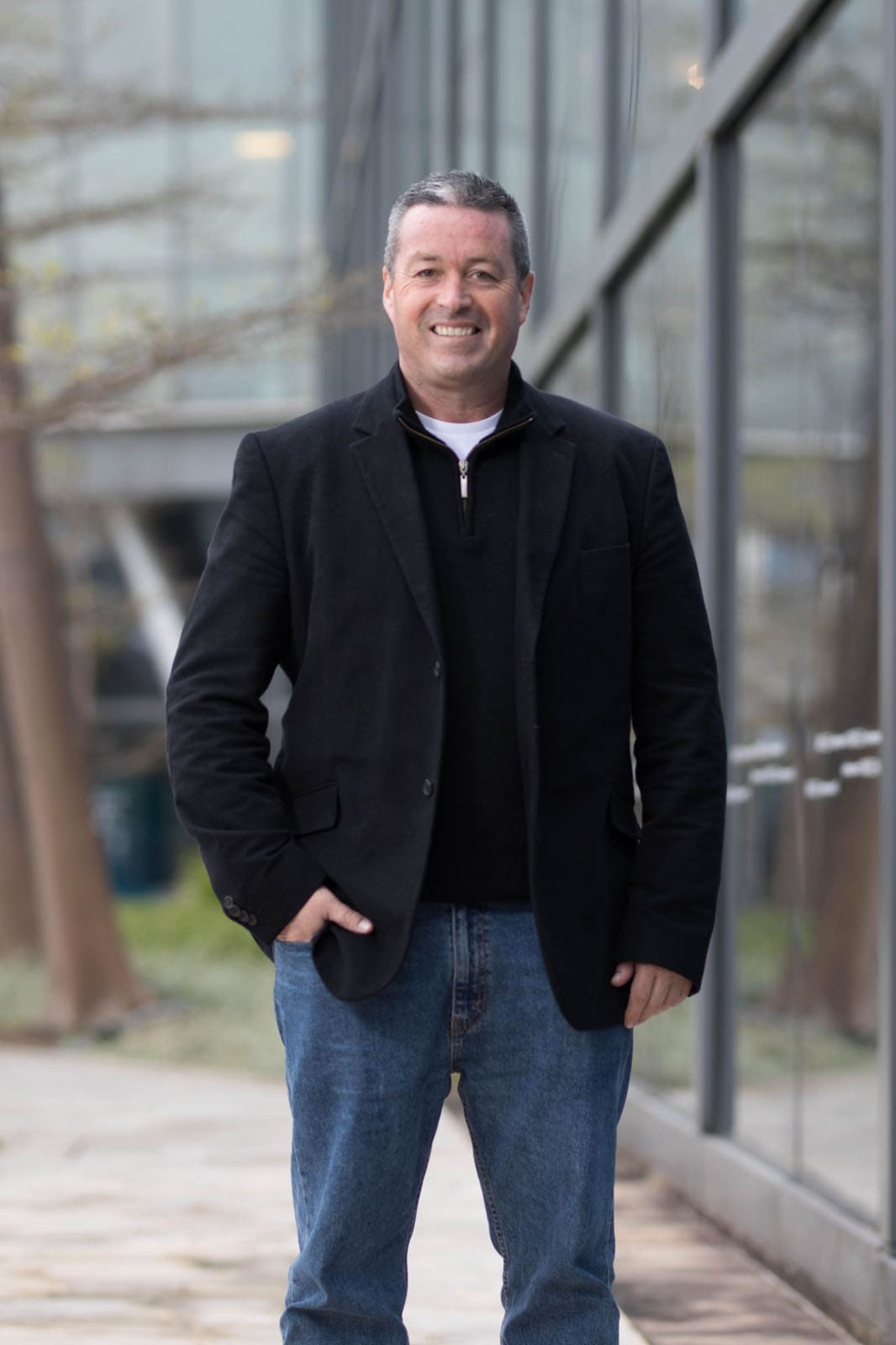
From commercial pilot to senior roles in consulting and banking for world-leading brands, Steve Monaghan is a well-known voice on innovation. He shares a fresh perspective with Roche Diagram magazine on how healthcare companies can build a more inclusive future.
Steve Monaghan believes we are at a unique point in history, where healthcare has an enormous social and economic opportunity to help people avoid getting sick. This requires a strategic shift in what he calls the “healthcare industry mindset”, which is still too focused on market share over market growth.
Monaghan points to the extraordinary gains made by technology companies in the last decade. “Take a look at Google. It drops advertising prices by about 11% per annum because it drives massive growth on the back of that inclusion. You really need to have a different mindset about how you grow markets. Otherwise, you will always be restricted to very low penetration or people behaving in ways that do not drive the right outcomes,” he said.
Monaghan believes the move towards predictive and preventive healthcare requires profound ecosystem shifts. Current incentives in this space are misaligned, starting with the way insurance is structured. “Health insurance is so complex that people don’t understand it as a product to begin with. Very few people can articulate what they’re actually insured for and what’s excluded.” Monaghan explains that even when they have the product, people have a genuine fear of making a claim. “We know that people delay or don’t do medical tests for fear of ruining their insurance, which is a stupid concept,” he said.
In an ideal scenario, people would test at the right time and catch chronic disease early, which would in turn, save on downstream treatment costs. For this to happen, the industry needs to become more inclusive. If you look at smart phones, almost everybody has one – the economic barriers to access technology are not that high, he said.
“Once you move diagnostics and treatment to those technology curves, it could be very interesting. It really comes down to two things: how you manage and mitigate risk, and how you remove transaction costs,” he said.
These two lessons come from Monaghan’s diverse work experience, which includes leadership positions at corporations and financial institutions including Dell, Compaq, Citigroup, OCBC, Shinsei, DBS Bank and AIA. He has experience introducing new business models and products in the region and is a private investor in artificial intelligence (AI), life sciences, healthtech and fintech.
Recounting his early years as a commercial pilot, he saw first-hand what automation was doing to his job. “I thought I could spend the rest of my life on autopilot in these great aircraft or I could do something very interesting in business.”
Monaghan cites the three laws of technology, which continue to drive disruption of industries from banking and retail, to music and medicine. The first is Moore’s law, which shows that processing power doubles every 18 months for the same cost. The second is Metcalfe’s law, which is the law of networks. It stipulates that the value of the network grows at the square of its participants. Lastly, there is Kryder’s law, which postulates that capacity for data storage doubles every 18 months. “Look at the impact on genome sequencing. It cost 100 million dollars to sequence one genome in 2001. Today, it costs about $500 and by mid-2020, it will fall to less than 3 cents,” he said.
However, even as the laws of technology drive affordability in some areas, medical care continues to become more and more exclusive. “The implications of an ageing population combined with rising healthcare costs with flat to negative incomes plus a diminishing tax base, are huge. So we need to rethink our approach and how we can drive medical inclusion,” he said.
Revisiting his two principles of managing and mitigating risk, Monaghan says that genomics combined with AI is already moving the needle from the concept of generic risk to specific and individualised risk. “Risk is as dynamic as you are,” he said.
According to Monaghan, the concept of dynamic risk is well accepted especially in aviation technology. “General Electric (GE) used to sell airplane engines and react to failure. Now they’re proactively monitoring those engines in real-time. Why wouldn’t you want to monitor yourself?”
Monaghan believes that the ubiquity of genomics will transform the importance of diagnostics. “Being continuously connected to diagnostics is definitely one of the mega trends. If you have a heart attack, do you really want to wait 30 minutes to get treatment? If you catch it really early, which we can do today and in fact predict it, your chances of survival skyrocket,” he said.

But how do we maintain the privacy and integrity of all this sensitive patient data? “I think individuals should own their own data 100%. This is why I’m a huge fan of blockchain. I think being able to put individuals in control of their own data to take it where they want to, to be able to give it over, and also withdraw that information if you don’t prove trustworthy with it, is the right way to go,” he said.
Monaghan provides an illustrative example of ways that people could use their health data. Take a person with cancer. From an insurance perspective, what reinsurance does is redistribute financial risk around this eventuality.
“Why shouldn’t I be able to, for instance, sell cancer risks to a diagnostic or device company who could manage that cost down as a business? Shouldn’t the customer have the right over whether that happens? I think they should,” he said. Ultimately, healthcare needs to learn from customer and end-user focus of technology companies.
It also needs to overcome the resistance from the more traditional sections of the industry and find ways to collaborate with regulatory bodies. There is a tendency, he said, to be passive and treat regulators as prohibitionists. “You really need to engage and point out those deficiencies in a much more open dialogue with regulators. This is also why many regulators are building sandboxes – essentially closed testing environments to safely test new technology and business models. This is a powerful approach,” he said.
Monaghan finds it interesting that technology can replace a restricted view with a much more granular view. However, this view requires a different lens. He gives the example of pharmacogenomics: “Some of the FDA-approved assessments will tell you today that 40% of the drugs that you ingest are either inappropriate or ineffective, or perhaps harmful for your genotype. If you look at this through the old lens, there will be resistance. If you assess it through the new lens, you’ll actually look at how you can better utilise this sort of technology to drive better outcomes.”
The interdisciplinary sharing of systems-level best practice will be essential to driving better healthcare outcomes, according to Monaghan. As our region faces significant growth opportunities coupled with challenges in diagnosis, delivery and access, continuing to look outside of the healthcare silo will become an important exercise for decision makers.














